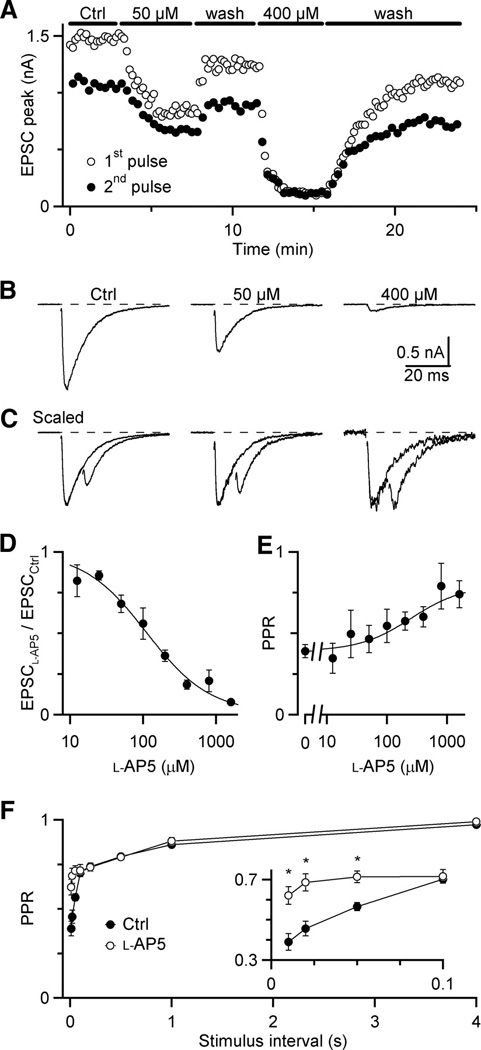Figure 5.

Fast component of NMDA EPSC depression is reduced in the presence of the low-affinity NMDA antagonist L-AP5. A, Representative experiment showing effects of L-AP5 on NMDA EPSC amplitudes. Trials alternated between single stimuli and paired pulse stimuli with Δt = 10 ms. L-AP5 is applied during periods indicated. B, Average NMDA EPSCs from the experiment shown in A, showing efficacy of L-AP5. C, Average paired-pulse EPSCs from the experiment shown in A, scaled to the same initial EPSC peak amplitude, to more clearly indicate changes in the second EPSC amplitude. D, Dose-response curve of L-AP5 for single EPSCs. Each point is the average of 2 to 8 experiments. Data are fitted with a Hill Equation of the form: relative block = 1 − (1 − min)/(1 + K/[L-AP5]), with K = 112 ± 13 µM and min = 0.0098 ± 0.018. E, Dose-response curve for NMDA PPR. Each point is the average of 2 to 8 experiments. Data are fitted with a Hill equation of the form PPR = 0.39 + (max − 0.39) / (1 + EC50/[L-AP5]), with max = 0.90 ± 0.12% and EC50 = 250 ± 190 µM. Number of experiments in D and E: 2 (12, 25, and 1600 µM), 3 (800 µM), 4 (100 and 200 µM), 6 (50 µM), 7 (0 µM in E), and 8 (400 µM). F, Paired-pulse recovery for NMDA EPSCs in control and 400 µM L-AP5 (average of 7 experiments). Asterisks mark significant differences (P < 0.01, paired t-test).
